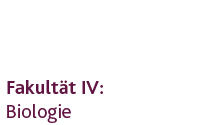Introduction
Sexual selection is one of the most important and most fascinating driving forces in evolution and a main research area in behavioural eology. It acts as selection of one sex through the other sex. Thus, sexual selection supports the evolution of traits which enhance the reproductive success of an individual through his or her mate choice. In most species, females are the choosy sex because females often invest more energy, time and other important resources to raise their young than males do (Krebs & Davies 1996, Trivers 1972). The mating preferences of females are therefore the driving force for the evolution of extravagant traits in males.
In addition to ecological factors (Endler & Basolo 1998) and maternal effects (Moussau & Fox 1998), the social environment has an eminent influence on female mate choice (Freeberg u. a. 1999). The social environment provides opportunities for interactions between and observations of conspecifics and therefore creates prerequisites for social learning (Heyes 1994). Social learning can also play an important role in the context of mate choice. Individuals living in groups can use public information (Danchin u. a. 2004, Dall u. a. 2005) about potential mates by observing conspecifics during mate choice.
Mate-choice copying is an important form of social learning in an intersexual context (Westneat u. a. 2000, Witte 2006). Females copy the mate choice of other females by observing a sexual interaction between a female and a male, and afterwards copulate with the same male as the observed female did before. Thus, females do not choose their partner exclusively independent of other females as theoretical models of sexual interaction suggest, but they can be influenced by the mate choice of other females.
